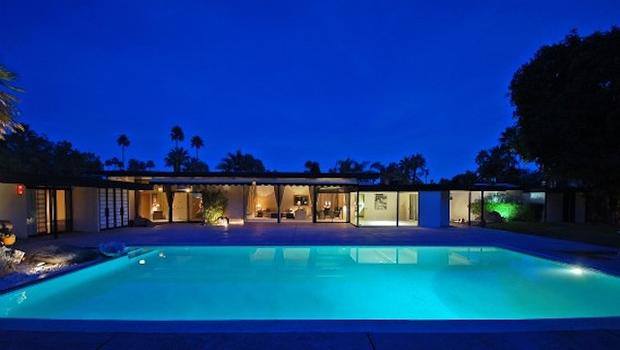Architect Hugh Kaptur Stars in Palm Springs Modernism Week
 |
|
|
In the canon of mid-century modern architects who made their mark in California, Hugh Kaptur often goes under-appreciated. But this year’s Palm Springs 'Modernism Week' promises not to commit that sin.
The architect, whose work spans the Coachella Valley but sits particularly densely on Tahquitz Canyon Way in Palm Springs, according to Palm Springs Life, will receive a star on Palm Canyon Drive’s 'Walk of Fame' during this year’s celebration. Modernism Week will also see the premiere of a film about Kaptur and his work, called Quiet Elegance. Tours will include his designed structures, and a party, called 'A Night at the Casbah,' will take place at the Kaptur-designed Burgess Estate on February 15.
But who is this architect who quietly helped make Palm Springs the mecca of modernism it is today?
Kaptur was born in Detroit, his father a designer at Packard and GM Studios. The Korean war was intensifying as he was coming of age, he said in an interview with Palm Springs Modernism Week (find part II here), so to avoid getting drafted he joined the Marines. That’s what brought him to California, where he was stationed at Camp Pendelton and met his wife. In 1954, after leaving the service, Kaptur moved back to Detroit to take a job in GM’s styling division, taking engineering classes from Lawrence University at night. But in 1956, he took a trip to Palm Springs and decided to stay.
Kaptur apprenticed for two years with the firm Wexler & Harrison, and after he was laid off, he went into business for himself. He told Modernism Week how, after nine years of working under the radar as an unlicensed architect, his reckoning came in the form of a confrontation with William Cody, another prolific Palm Springs architect. Cody, annoyed that the unlicensed Kaptur had been given a contract to build a city firehouse, reported him to the State Architectural Licensing Board.
So, anyway, I sat down with this inspector and he said, “Hugh, from your work it’s obvious you’re qualified to be an architect. So why in the world don’t you take the exams and get licensed?” So I told him that the reason was that I didn’t have two years experience with a licensed architect, which was a requirement to take the exams. And he handed me an application and he said, “Hugh, you fill that out and I’ll take it back and I guarantee that you’ll be approved to take the exam.” So he did and I took the exams and I became an architect and joined the AIA. And wouldn’t you know it, after that Bill Cody became my best friend. One thing I’ve learned is that out of every adverse condition, you come through and life is better than it was before.
Kaptur went on to design some of the most iconic buildings in Palm Springs, including a house for actor Steve McQueen. He told Modernism Week: “I experimented with the Neutra style of putting boxes together in the Steve McQueen house. But I found the Frank Lloyd Wright style to be more artistic. I tried to be more artistic in my architecture. Some buildings I was able to express it, and some buildings you’re doing it for a living.”
Visitors to Modernism Week will get many more chances to learn about this underappreciated architect. But in the meantime, a glance at his interviews with Modernism Week, as well as the trailer for the film about him, should bring us up to speed.
- ‹ previous
- 37 of 677
- next ›




